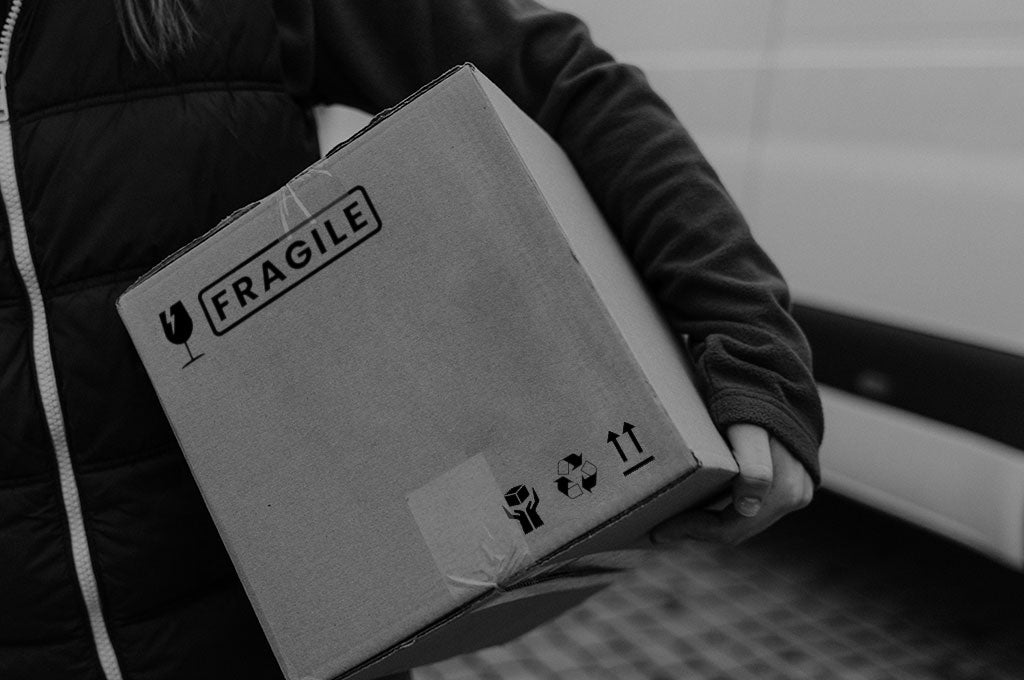Dead On Arrival: 4 Ways to minimise breakages in transit for Ecommerce Retailers

Products that are deemed to be dead on arrival (DOA) are little short of a nightmare for Ecommerce retailers. Not only do DOA products cost you money and time to replace or refund broken or damaged items, but it can also damage your relationship with customers and earn you bad online reviews for your business. It is therefore crucial to take all the necessary steps to minimise breakages in transit. In this article, we’ll discuss four practical ways that online retail businesses can reduce the risk of items getting damaged during delivery.
1) Use appropriate packaging materials
High quality packaging materials are an online retailer’s first line of defence against breakages during transit. Items don’t need to be over packaged – as this can run counter to sustainability – but it is important to use the appropriate packaging materials for the item in question. For example, any boxes or mailing envelopes you choose must be sturdy enough to withstand transportation, and where necessary you should also use void fill materials, such as shredded paper or a bubble wrap alternative, to cushion your products and keep them from moving around inside the packaging.
2) Label your packages clearly
To ensure that your packages are handled carefully during transport by your 3PL partners and couriers, label them clearly with the correct address and shipping information. This helps avoid wrong-address deliveries and minimises the amount of handling required in the supply chain, which reduces your breakage risk. Put bluntly, the more a package is handled, the higher the chance there is of it getting broken.
You should also consider adding printed or label markings to packaging to indicate that contents are fragile – by doing so, delivery personnel will immediately know to handle your packages with extra care. This can include general instructions such as ‘this way up’, and if there are any specific handling requirements for an item, such as keeping it at a certain temperature or not stacking boxes on top of it, these should be clearly communicated to the delivery partner and included as instructions on the packaging.
3) Choose your delivery partners carefully!
There has never been more choice in terms of couriers and delivery partners for ecommerce products, and so making the right choice can make all the difference when it comes to minimising breakages in transit. The ‘big names’ may be expensive for independent retailers and some of them don’t have the best reputation. On the other hand, however, independent or unlicensed couriers may be cost-effective, but some may not treat packages with the care that they deserve, resulting in damage to products. It’s therefore crucial to research different local courier companies and read reviews carefully before choosing one to use for your business, especially for last mile logistics, and take a measured decision to balance your operational risk level. Many businesses save money by spreading their risk by using multiple delivery partners, carefully evaluating the performance of each partner and making changes when necessary.
4) Conduct a packaging audit
Regularly reviewing and updating your packaging strategy is a good risk mitigation strategy for Ecommerce businesses, and conducting a thorough packaging audit can help identify areas of weakness and areas for improvement. An audit can involve testing different types of packaging, reviewing customer feedback, and evaluating the success and breakage rate of your current packaging methods. Making targeted changes to your packaging might help to reduce the risk of breakages in transit and save you money long term.
Next steps
To find out more about high quality bespoke packaging and how this can help reduce your risk of breakages during delivery, please get in touch with one of our packaging design specialists today by calling 01923 953078 today to explore Ecommerce mailing options for your business.






